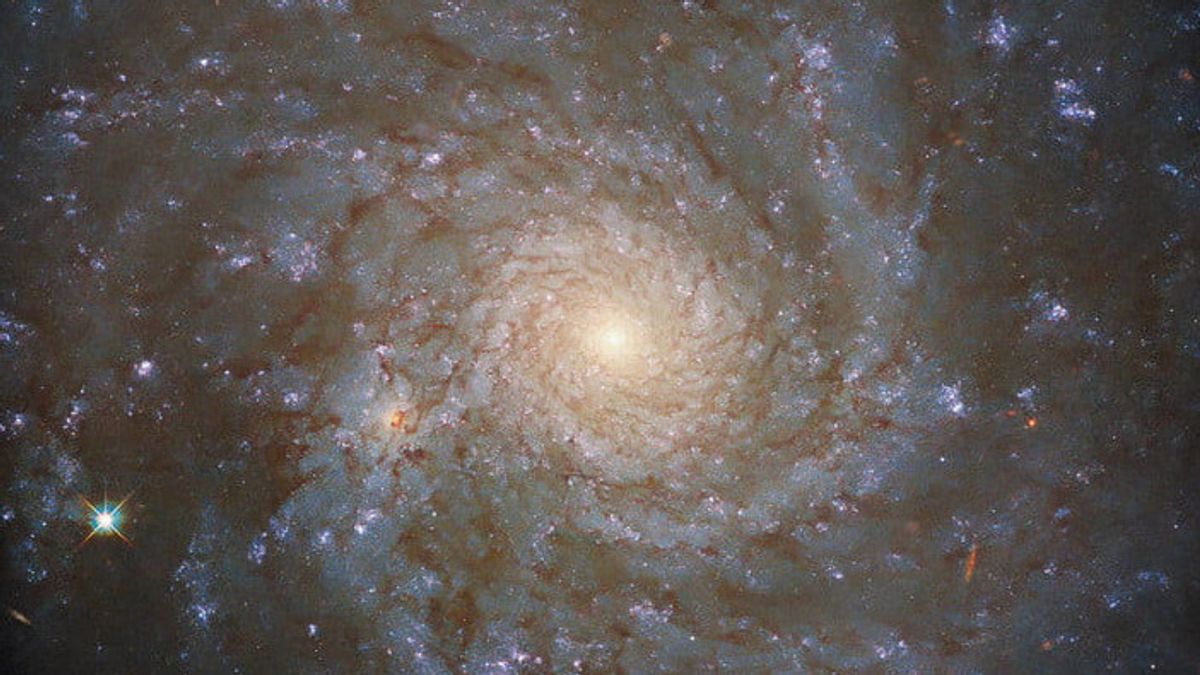JAKARTA - The Hubble Space Telescope has captured another stunning image of the spiral galaxy, dubbed NGC 4571. The galaxy itself is located 60 million light-years away in the constellation Coma Berenices, and was captured using Hubble's Wide Field Camera 3 instrument.
"This image comes from a large program of observations designed to produce a treasure trove of combined observations from the two large observatories (namely) Hubble and the Atacama Large Millimeter/submillimeter Array (ALMA)," the Hubble scientists said.
ALMA is a large telescope consisting of 66 high-precision antennas in the Chilean Andes, which together observe at wavelengths between infrared and radio waves.
This allows ALMA to detect cold interstellar dust clouds that are giving rise to new stars. The Hubble and ALMA observations make it a good partner for observing targets using different wavelengths.
"Hubble's sharp observations at ultraviolet wavelengths, meanwhile, allow astronomers to pinpoint the location of hot, glowing, newly formed stars," said the Hubble scientists, as quoted by Digital Trends, Monday, March 28.
"Together, the ALMA and Hubble observations provide an important data repository for astronomers studying star formation, and lay the groundwork for future science with the NASA/ESA/CSA James Webb Space Telescope."
Like Hubble, ALMA is also used to study a variety of targets, from distant objects such as a series of planets in various stages of formation to those in the Solar System such as Jupiter and its complex atmosphere.
The telescope has even contributed to large-scale projects such as the discovery of ancient massive galactic treasures that provide clues to the early stages of the universe.
In addition, Galaxy NCG 4571 was also imaged as part of the PHANGS-HST (Physics at High Angle resolution resolution in the Nearest Galaxy with Hubble Space Telescope) project between Hubble and ALMA.
The survey aims to study how young stars form from gas clouds by looking at nearby galaxies. This week's Hubble image is part of the same project of the beautiful spiral galaxy NCG 2835.
The spiral galaxy NGC 2835 itself is located in the constellation Hydra in the southern hemisphere, and close to the constellation Hydra.
NGC 2835 is best known for its cold gaseous region where new stars are born, shown in bright blue. This color indicates areas where light close to the ultraviolet range is released, which scientists know is related to the process of star formation.
The English, Chinese, Japanese, Arabic, and French versions are automatically generated by the AI. So there may still be inaccuracies in translating, please always see Indonesian as our main language. (system supported by DigitalSiber.id)








